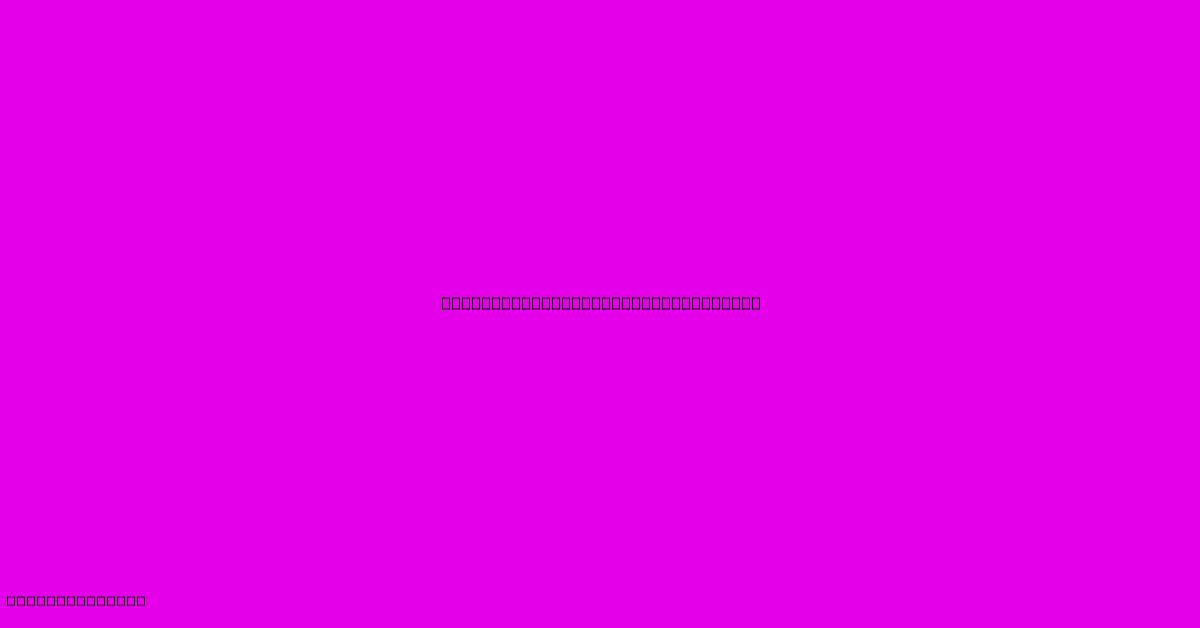Droplet Measurement Technologies

Discover more detailed and exciting information on our website. Click the link below to start your adventure: Visit Best Website mr.cleine.com. Don't miss out!
Table of Contents
Droplet Measurement Technologies: A Comprehensive Overview
Droplet measurement technologies are crucial across numerous scientific and industrial fields, from inkjet printing and spray painting to medical diagnostics and atmospheric research. Accurately characterizing droplet size, velocity, and other properties is essential for optimizing processes, understanding phenomena, and improving product quality. This article delves into the diverse range of techniques employed for droplet measurement, highlighting their principles, applications, and limitations.
Optical Techniques: Capturing the Light Scattered by Droplets
Optical methods are widely used due to their non-invasive nature and ability to provide high-speed, real-time measurements. Several key techniques fall under this umbrella:
1. Laser Diffraction: This technique involves illuminating a droplet spray with a laser beam and analyzing the diffraction pattern created by the droplets. The size distribution is then calculated from the diffraction pattern using Mie theory or Fraunhofer diffraction. Laser diffraction is suitable for measuring a wide range of droplet sizes, from micrometers to millimeters, and is often used in industrial applications such as spray drying and powder coating. Advantages: High throughput, robust, relatively inexpensive. Disadvantages: Assumes spherical droplets, can be sensitive to multiple scattering.
2. Image Analysis: High-speed cameras capture images of droplets, allowing for direct measurement of size and velocity. Advanced image processing algorithms can analyze hundreds or thousands of droplets per second. This technique is particularly useful for characterizing complex droplet shapes and non-uniform sprays. Advantages: Provides detailed information on droplet shape and velocity, can handle polydisperse sprays. Disadvantages: Can be computationally intensive, limited by camera resolution and frame rate.
3. Phase Doppler Anemometry (PDA): PDA measures both the size and velocity of individual droplets by analyzing the phase shift and frequency of light scattered by the droplets. It offers high accuracy and resolution, making it suitable for detailed investigations of spray dynamics. Advantages: Simultaneous measurement of size and velocity, high accuracy. Disadvantages: More complex and expensive than other optical techniques, requires careful alignment and calibration.
Electrical Techniques: Sensing the Charge of Droplets
Electrical methods leverage the electrical properties of droplets for measurement.
1. Electrical Conductivity: For conductive droplets, this technique measures the change in conductivity of a liquid as droplets pass through it. This approach is simple and relatively inexpensive but less precise than optical techniques. Advantages: Simple, inexpensive. Disadvantages: Limited accuracy, only suitable for conductive droplets.
2. Electrostatic Charging: This technique uses an electrostatic field to charge droplets, and the induced charge is then measured. This method is often used in conjunction with other techniques to provide additional information about droplet properties. Advantages: Can be used to measure droplet charge. Disadvantages: Requires careful control of environmental conditions.
Other Techniques
Beyond optical and electrical methods, several other techniques are employed for specialized applications:
-
Acoustic Methods: Sound waves are used to measure droplet size and velocity. These techniques are particularly suitable for harsh environments where optical methods may be difficult to implement.
-
Focus Variation Microscopy: This technique uses a series of images captured at different focal planes to reconstruct a three-dimensional image of the droplets, allowing for detailed analysis of their shape and size.
Choosing the Right Technology
The selection of an appropriate droplet measurement technology depends on several factors, including:
- Droplet size range: Different techniques are optimized for different size ranges.
- Required accuracy and precision: The choice will depend on the specific application requirements.
- Spray characteristics: The density, velocity, and shape of the spray will influence the choice of technique.
- Cost and complexity: Some techniques are more expensive and complex to implement than others.
Droplet measurement technologies continue to evolve, with ongoing research focusing on improving accuracy, resolution, and speed. The development of new techniques and the integration of multiple techniques will further enhance our ability to characterize droplets across a wide range of applications.

Thank you for visiting our website wich cover about Droplet Measurement Technologies. We hope the information provided has been useful to you. Feel free to contact us if you have any questions or need further assistance. See you next time and dont miss to bookmark.
Featured Posts
-
Packers Lead Vikings 3 0
Dec 30, 2024
-
Barkley Nears 2000 Rushing Yards
Dec 30, 2024
-
Anhui University Of Technology
Dec 30, 2024
-
Skyactiv Technology Cx 5
Dec 30, 2024
-
Berrettini Eliminato Atp Brisbane Vince Thompson
Dec 30, 2024
